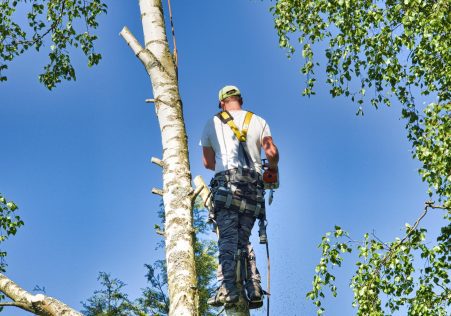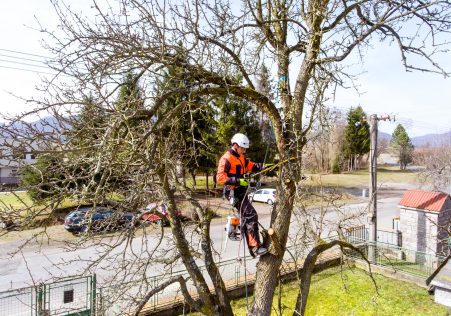How Long Do the cut Tree Roots Last?

Tree removal is a necessary task for many property owners, however, it’s not as easy as cutting off the branches and leaving the root to decompose. Knowing the life span of tree roots is crucial in ensuring that the removal process is done in a safe and secure manner. The article below we will examine the duration the roots of trees last after a tree is cut down and answer many of the frequently asked questions regarding this subject.
How long will tree roots last after cutting them down?
The lifespan of tree roots after a tree has been cut down could vary widely based on the kind of tree, the length of the roots, and the environmental conditions. In general, it’s possible to conclude that the roots of trees will continue to live for a long time after a tree has been removed. The reason for this is that the roots are capable of absorbing moisture and nutrients from the soil, long after the plant has been removed.
Factors that affect the longevity of Tree Roots
There are many aspects that impact the length of time that tree roots last after a tree is taken down. A few of them are different species of trees There are certain species of trees that contain roots that are robust and last longer than other species. For example, oak tree roots are known to last for a long time after the tree is cut down. Size of the roots The more extensive the roots of a tree is, the longer they’ll likely last after the tree is cut down. This is because bigger roots are able to absorb nutrients and moisture from the soil. Environment conditions: The soil kind, temperature, and moisture levels in the area in which the tree was removed will affect the life span that the root system. In the event that the soil has become dry and compacted, the roots are likely to decompose more rapidly. If the soil is well-drained and moist, they will live longer.
What happens to the tree Roots After Cutting Down?
If a tree is cut down, the roots will gradually begin to decay. The process could take several years depending on the circumstances discussed above. During this time, the roots will slowly discharge nutrients to the soil, which can be beneficial for other plants within the region. Once the roots have fully decayed, they’ll not pose a risk to the surrounding landscapes or structures.
FAQs:
Can tree roots regrow after cutting them down?
No, tree roots cannot grow back after a tree been removed. After the roots have been removed, they will gradually begin to break down and no longer be capable of regrowing.
Are tree roots able to continue to expand after cutting them down?
Tree roots will not continue to grow after a tree has been taken down. However, they’ll be around for several years as they’re still capable taking in nutrients and moisture out of the earth.
Do tree roots continue to spread after the cutting?
The roots of trees won’t continue to grow after a tree has been removed. Once the tree has been removed, the tree’s roots slowly begin to decay and will no longer pose a threat to the surrounding landscapes or structures.
Conclusion:
In conclusion, the duration of tree roots after a tree has been removed can be a lot according to a number of variables. Understanding the length of time the tree’s roots can last is crucial for ensuring that the tree removal process is carried out in a safe and secure manner. If you own a tree that needs to be removed, it’s recommended to employ a professional Tree Removal Service Brisbane arborist to carry the task. Our highly skilled and knowledgeable arborists have the tools and know-how to safely and effectively remove trees and resolve any concerns about the longevity that the tree’s roots. Contact us now by phone at 1300 735 217 to schedule a consultation and find out more about our tree removal services within Brisbane. Don’t risk damaging your property or putting yourself at risk when you attempt to take down a tree on your own. Let the experts from Tree Removal Service Brisbane handle all of the tree removal requirements.





















